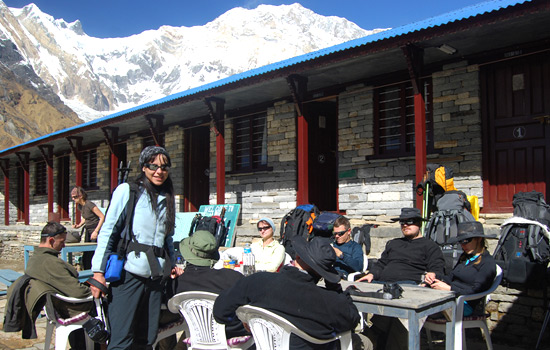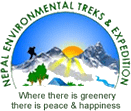30th Jul, 2023
Trek Info
Before booking a trekking package, it is better to know some very important information about trekking in Nepal. This trekking information page enclosed some very important information about trekking.
Table of Contents
What is Trekking?
Trekking means to journey on foot, especially to hike through mountain areas or walk in the countryside for pleasure or sport. Perhaps among the various kinds of activities that you can enjoy during your visit to a country like Nepal which is blessed with varied bio geographic regions.
Trekking involves walking on an average of 5 to 7 hours per day covering about 9 to 14 kilometers. The trekking route passes through forest, high passes, valleys, meadows, rice fields, idyllic hamlets with the backdrop of the magnificent Himalayan range, glaciers, snow fed rivers and lakes depending on the region you trek.
During a trek you can either stay in simple lodges or homes of local people, or camp for the night. Trekkers can either choose virgin tracks or beaten trails to reach their desired trekking destination.
Some people confuse trekking with climbing but trekking does not involve mountain climbing, it only involves walking on trails. Trekking is a healthy activity though it does have certain amount of caution is required to avoid accidents. If you are physically fit trekking will not be difficult for you. No prior climbing training is required for trekking but you need to have love of walking to enjoy trekking.
Choosing & Planning a Trek
Choosing a Trek
Please remember that occasionally bad weather, altitude and unfamiliar cultures can make extra demands. A sense of humor and determination are important attributes on any adventure holiday and on a trekking holiday it is important to enjoy walking. In order to help you in selecting a trek we have given each trek a grade, although this is only a simple guide. If you need help in deciding which trek is suitable, please call or send an email to us, we will be pleased to advise you further.
Planning a Trek
Nepal offers plenty of opportunities for treks lasting a day or less, though most are considerably longer. Around Pokhara or the Kathmandu Valley you can complete the trek within two, three or four days but for the very popular Everest Base Camp Trek and Annapurna Circuit treks you have to allow three weeks.
The difference between hiking and trekking
Hiking is an outdoor activity of walking in natural environments often on pre charted paths called hiking trails, while trekking is a long journey on non-designated paths which could last several days and could be demanding. Trekking usually takes places in the area of great natural beauty, usually in the mountain areas without any means of transport. It is more intense than hiking.
Hiking is an initial part of trekking and relatively easier than trekking, which still involves going uphill and downhill on rural hilly areas below 3000 meters. Hiking in Nepal still offer a glimpse of high mountains views, while trekking takes you through the low land village to high Mountain pass up to almost 5,600 meters.
What are the best trekking routes in Nepal
There are many trails that are popular for trekking in Nepal. Everest region, Annapurna region and Lantang region are well-known areas which offer more than two dozen trekking routes. Everest Base Camp, Annapurna Base Camp, Annapurna Circuit, Lantang Valley, Ghorepani Poon Hill and Jomsom Muktinath are the most famous trekking trails in Nepal. Besides these, there are many wilderness trails waiting for tourists to explore.
Trekking Seasons in Nepal
a. Spring season (March - May):
The second most popular time of the year for trekking and climbing in Nepal is from late February through April. Spring is a colorful season, different varieties of wild flowers specially the rhododendrons. The temperature is mildly warm at lower elevations and the temperature is moderate above 4000m and the mountain views are excellent. Holi and Shivaratri festivals are also celebrated during this season.
b. Summer/Monsoon season (June - August):
Travel in Nepal during summer months are wet and warm. It is not recommended for trekking and climbing except in the rain shadow regions like Langtang, Dolopa and Upper Mustang. In the higher valleys, meadows blossom with flowers and lush vegetation. It is fine to travel to Tibet, Sikkim, Ladakh (India) and Bhutan during monsoon.
c. Autumn season (September - November):
Autumn is one of the best seasons to travel to Nepal. It starts from early September to early December, generally during autumn; the weather is clear with mild to warm days and cold nights. In this season, the mountain views are astonishingly clear. Also, during autumn there are all kinds of tourist activities. It is the best season for trekking and climbing, flowers blooming and Nepal is lush with an abundant green.
The main festivals in Nepal, Dashain and Tihar (Deepawali) are celebrated in autumn. It is the best time to experience your travel in Nepal with cultural, history, nature and wildlife.
d. Winter season (December - February):
Winter season in Nepal starts from late December and continue to till March. The cold season is best for sightseeing and cultural tour in Nepal. Jungle safari, bird watching, city sightseeing tours, and mountain biking are the popular activities in winter. Due to the frozen of snow, the mountain rivers are low volume water, so rafting during this season is popular one.
Trekking in the lowland of Nepal are possible but in the mountain heavy snowfall might be the problem for trekking.
Trekking Group Size
Group sizes are kept small, to reduce the impact on the environment and to enable us to provide a more personal service. The maximum group size on most of our treks/tours is 12 and the minimum group size is 2.
Trekking Equipments
We provide a kit bag (for your goods to be carried by porter) and at tea houses you will have foam mattresses. If you are on camping trek, company provides the mattresses, tents etc. You may bring your own down jacket and sleeping bag or you may purchase (one quarter of price in KTM) or hire for around US$ 1 per item daily. Do not come without “well walked in boots”-poor boots poor trek and the best boot the best trek.
General
- - Lightweight walking boots "walked" on them prior to arrival in Nepal to avoid blisters.
- - During day-light weight cotton pants, shorts wrap around skirt.
- - At night-track top, pants.
- - Cotton T-Shirts.
- - Sun hat-sunburn is severe at rarefied altitudes.
- - Thick outer woolen socks, thin inner cotton.
- - Vaseline for feet and crouch.
- - Water bottle-2 liters.
- - Iodine to purify water.
- - Swimming suit.
- - Sunglasses and strap.
- - Toilet paper and cig. Lighter.
- - Small headlamp/ flashlight/ torch with spare batteries.
- - Personal medical supplies-do not forget band-aids, elastic bandage.
- - Pocket knife and sewing kit.
- - Sunscreen, sun bock, sun-tan lotion.
- - Small daypack-25 liters.
- - Rain jacket-poncho style to cover backpack.
- - Water proof pant.
- - First aid kit.
- - Small towels.
- - For Winter Season (Additional)
- - Warm down fiber filled jacket.
- - Sleeping bag to-15 c with inner sheet.
- - Thermal underwear, woolen shirts and thick sweaters.
- - Flannel shirt.
- - Beanie with ear flaps.
- - A pair of gloves.
- - Snow glasses and strap.
- - Snow gaiters.
Additional Suggestion
- - Sandals or slip on shoes.
- - Camera and film.
- - Spare boot laces.
- - Large plastic bag to line kit bag, day pack and for dirty clothes.
Altitude & Acclimatization
Proper acclimatization is very important and our routes are planned specifically to allow a gradual gain in altitude with many of our treks having extra days to allow time for acclimatization. By slowly gaining height we reap the benefits of a gradual gain in fitness and acclimatization. We offer advice about acclimatization and with the sensible approach we take on all of our treks, anyone who is fit and healthy should have few problems. On our climbing trips in Nepal and trekking trips in Tibet we carry a portable altitude chamber as an extra safety precaution.
Trekking Duration & Grade
a. Duration of the Trek
A trekking trip can be of any length you choose. Popular short treks are available around the Kathmandu and Pokhara valleys, which can be complete in one, two or three days while longer treks last from a week to a month. It is even possible to combine a series of popular treks together and peak climbing for months on end.
b. Trek Grades
Easy treks involve up to 6 hours of walking a day on good trails with plenty of time for sightseeing. Altitudes generally do not exceed 3500 meters. Anyone who enjoys regular exercise and is in god physical condition should easily cope with these treks.
Moderate treks involve walking for 6 to 8 hours a day in more remote country, reaching altitudes of approximately 4500 meters. A reasonable level of fitness is required as you are required to follow routes that ascend and descend. A hill walking background is advisable.
Strenuous treks are harder, suitable for regular hill walkers as they are generally more demanding and may involve 7 or 8-hour days with altitudes up to 5500 meters. You should be physically fit and appropriate preparation is imperative. Some days may involve crossing a pass with up to 10 hours walking.
Recent Posts


 Search
Search